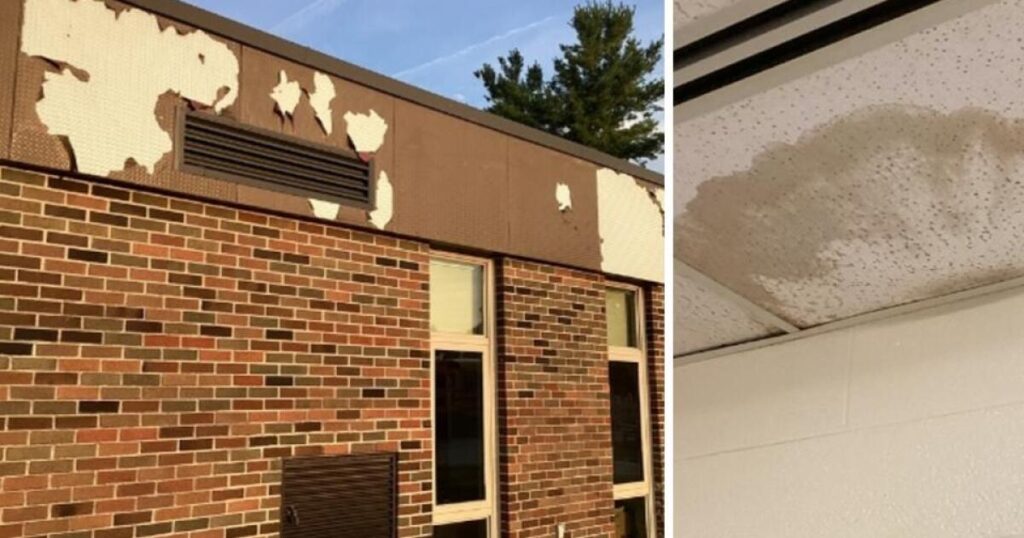As the November 4 election approaches, voters in numerous Michigan school districts, ranging from Dearborn Heights to Mancelona, will encounter sinking fund proposals on their ballots.
Sinking funds, similar to operating millages and bonds, depend on local property taxes, known as “millages.” However, they are distinct in several aspects.
Sinking funds vary from school operating millages in a few key ways:
- Most homeowners contribute to taxes for sinking funds, whereas operating millages typically apply to secondary homes and commercial properties in most districts.
- Sinking fund resources are designated for “capital projects,” meaning they are not used for teacher salaries, utility costs, or other general expenses.
Examples of capital projects include constructing new buildings or renovating and maintaining existing structures. Additionally, schools can utilize sinking funds for acquiring new security systems, educational technology, or buses.
Unlike bonds that provide a substantial financial influx, sinking funds offer smaller amounts over time, making them less suitable for extensive renovations or large purchases.
Nonetheless, sinking funds can support schools in addressing minor improvements and ongoing maintenance without resorting to loans or dipping into the operating budget.
Voters have the opportunity to express their views on proposed sinking funds, determining whether the district’s initiatives warrant the tax.
This process encourages school officials and community members to collaborate on district priorities, according to David Arsen, professor emeritus in education policy at Michigan State University, who has researched Michigan’s school finance system.
“These proposals actually get a lot of vetting,” Arsen noted. “These don’t get on the ballot without a lot of discussion in local communities.”
Despite the restriction against using sinking funds for salaries and utilities, Arsen pointed out that some districts still need to allocate operating budget funds for expenses that sinking funds could cover.
FAQs on School Sinking Fund Proposals for Your Ballot
Click a question to view the answer.
Where can I learn about what a sinking fund will be used for?
How can I make sure a district uses funds appropriately?
Can sinking funds be paid with existing taxes?
Where can I learn about what a sinking fund will be used for?
Districts often provide informational pages with details on these proposals, including project specifics, timelines, and budgets. Some feature images of the areas needing upgrades.
“You don’t have to take hours, you know, ten minutes of searching on the website, you get a pretty good idea of what’s being planned,” MSU professor emeritus David Arsen said. “And I think that’s … a good opportunity for citizens to get involved with things that matter in their communities.”
Arsen also mentioned that there are numerous opportunities for community engagement through school board meetings and town halls, as well as social media and videos.
“This is one area where we have local control and the proposals actually get a lot of vetting,” he said. “These don’t get on the ballot without a lot of discussion in local communities … about what we need, what it should look like, where it should be.”
Local news outlets are also a great place to learn about these proposals, Arsen said.
How can I make sure a district uses funds appropriately?
While a sinking fund is in effect, districts are required to perform annual audits to ensure that money was used in a way that fulfills the proposal’s promises and follows state law. You can find audits for current and past sinking funds on your district’s website.
The state’s department of treasury reviews each audit. If the department determines that funds were misused, state law requires districts to pay money back into the sinking fund from their operating budget.
Can sinking funds be paid with existing taxes?
Yes and no. Districts can’t use their operating millage on a sinking fund.
But districts have been relying on bonds and sinking funds to handle facility needs for years. So, in some cases they can just ask voters to renew or extend an existing millage that was used to pay off a past bond or fill a lapsed sinking fund.
Dearborn Heights School District No. 7 in Wayne County is asking voters to extend a millage for 10 years at the current rate of about 4.7 mills to cover a sinking fund that will give the district $1.38 million annually. The district says the money would go to repairing roofs, bathroom upgrades and more.
Sometimes districts are asking for a new millage or an increase to an existing one.
—
Read More Michigan News










